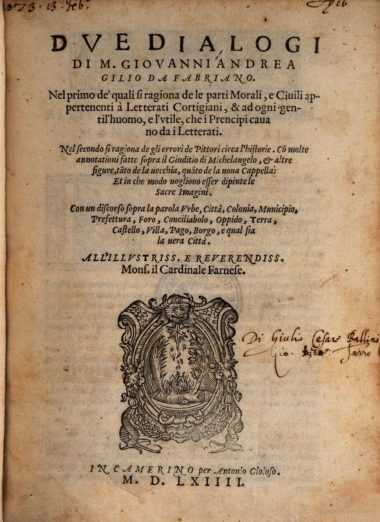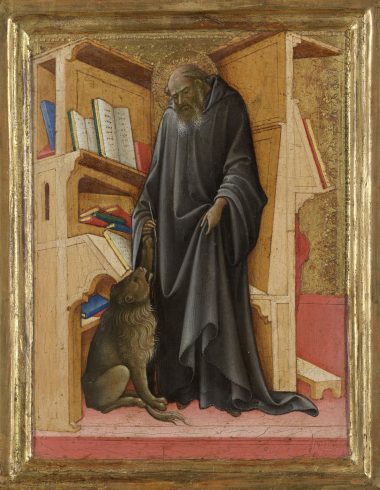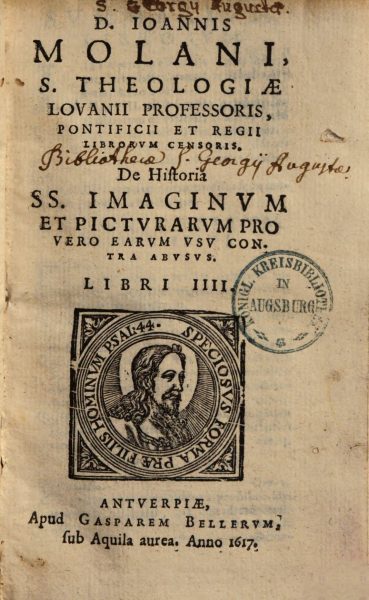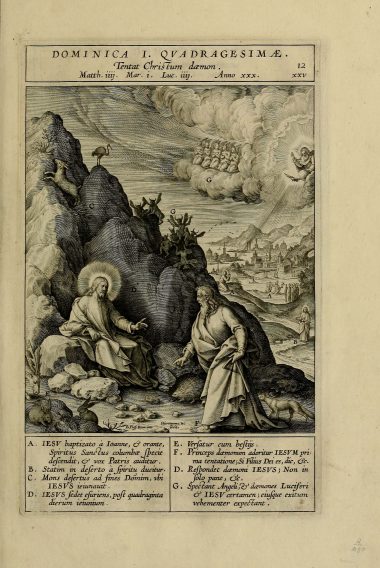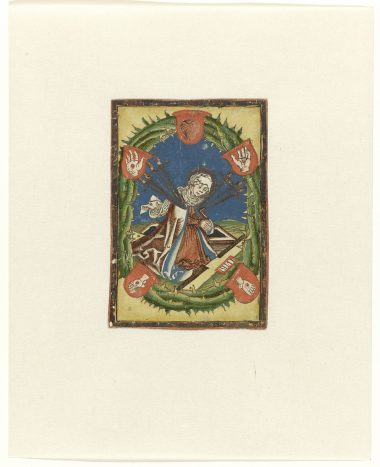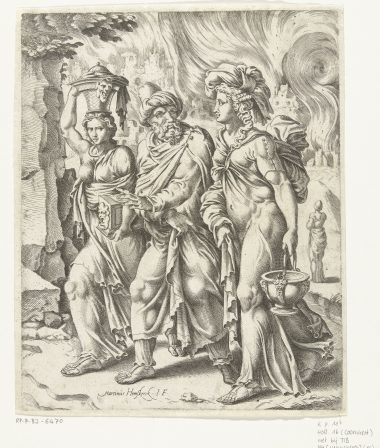The artists’ abuse of the age
In this section of the dialogue, the participants address various cases of abuse in the representation of saints. The central focus is on the incorrect representation of age.
The dishonourable way of painting angels as figures and faces of women
Pacheco criticises how often painters used to make their angelic figures and faces like those of women: according to the author, elements such as heads adorned with curls and “feminine tresses in their hair, and “enlarged breasts” are unworthy and do not correspond to the best way of representing the “perfection” of angels.
How to represent St. Peter (and how not to do it)
Dealing with the story of St. Peter (Apostle), Pacheco analyses the correct way of representing the saint, not just presenting a few models to follow, but also some inadequate manners of depicting specific scenes/elements of the saint’s life, such as depicting St. Peter bald or tied to the cross with cords.
Attributes in recent paintings of historical figures, such as Jerome, do not mean that they really had them
Molanus argues that in the depiction of holy figures their exterior features, such as their clothes or the attributes they hold, do not mean the historical figure him- or herself possessed or used these.
All impudence in images should be avoided
Molanus argues that saints should not be adorned with profane or ungodly elements, nor should they have the faces of people who are still alive.
On how to depict St. Andrew
Molanus discusses the exterior features of St. Andrew would have been black of medium height and with a full beard.
Series of twelve images with the Passion of Christ, which are considered suspect of Lutheranism
Letter of the Suprema to the Inquisitiors of the town of Valencia describing some cavases that allegedly entered the kingdom and recommending that they be collected so that they do not continue to circulate.
Arguing over a painting
Alfonso Ortiz, a Neapolitan, argued with the painter from whom he had commissioned the canvas, threw it to the ground and broke the loom.
A heretical way of representing the “Annunciation”
According to Pacheco, from an analysis made by Molanus, an erroneous, dangerous, and heretical manner of representing the Annunciation is, instead of depicting the Holy Spirit, adding a glow on the head of the Virgin, and in it a naked Child Jesus, with a cross on his shoulder, and the angels with God, the Father.
How to represent Christ in the cross
,
1556Francisco Pacheco in this passage created a response to Francisco de Rioja with the intention of counter-arguing him on his theory that Christ would be crucified with three nails, instead of four. Also, the author states that Christ should be not naked, but rather wear a white cloth and use the crown of thorns on the Cross.
The Virgin Mary kneeling during the Nativity of Christ
Molanus argues that depicting the Virgin Mary kneeling in front of the infant Christ are allowed.
Paintings ridiculing the Holy Scriptures are blasphemous
Molanus condemns ridiculing holy stories and persons as an act of blasphemy and those who practice such matters should be punished for it.
Moral significance of insects
Molanus discusses the usefulness of insects, spiders, ants and similar animals in painting and indicates their moral significance and therefore usefulness to painting.
Idols and images are not to be adored
Bernat de Angay, a French-born prisoner claims to have read in the Apocalypse that the images should not be venerated
Christ in the wilderness (desert)
Pacheco states in this passage how should be depicted the scene and its characters of “Christ in the wilderness (desert)” (Pacheco 1990, 639). The author mentions also the image made by Jeronimo Nadal, Pablo de Céspedes, and his own artwork as good models to be followed.
The Virgin Mary is always a virgin and free of sin
Molanus explains the iconography of Virgin Mary trambling the Devil with her feet as the depiction of her life free of sin and her virginity.
Iconographies refuted by the commentators but popular with the people (Seven Falls of Christ; Mary pierced by Seven Swords; Mary’s three Vows)
Molanus argues that as long as paintings that promote stories or subjects that do not derive from the Scriptures and that neither have been approved by the commentators do not lead to impiety they are allowed.
Lot’s wife turned into a salt pillar
Molanus argues that artworks of stone, metal and the like are considered statues and can keep the memory of something alive, like Lot’s wife, who was turned into a pillar of salt and can thus be sacred objects.
The Lord himself approves the use of the ruler’s portrait on coins
Molanus defends the custom of using the head of the ruler on coins is allowed, however also religious signs or saints would traditionally be struck on coins.
The freedom of the brush
After the participants have divided painting into the three categories, they devote themselves to the freedom of the poetic painting.
The debate about the portrayal of God
The topic of the dialogue section is the representation of God.
The indecency of depicting Saint Anna and Saint Joachim kissing each other
Concerning the iconography of the Meeting of Anna and Joachim at the Golden Gate, the artists should not depict a kiss between the two saints (an error that follows the idea that the Virgin Mary was conceived by a kiss according to “some ancient little women testimonies”). On the contrary, the artists must represent both embracing each other “with great composure and modesty, which is very decent according to the married Saints”.
How to represent the story of St. Paul and his meeting with Jesus Christ (and how not to do it)
Dealing with the story of St. Paul and his meeting with Jesus Christ, who appeared to the saint on the road to Damascus, Pacheco states how both should be depicted.
Annunciation of the Virgin flying infant Christ (homunculus)
Molanus rejects the practice of the depiction of a small Jesus, also known as the homunculus, carried by the rays of light of the Holy Spirit and ready to enter Mary’s body during the Annunciation.



